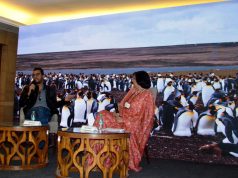 By Ganesh Saili
By Ganesh Saili
The Powell family owned large tracts of land in Dehradun and Mussoorie; they lent their names to the places where they lived. That is how Clement Town came to be named after Clement Powell, and we have Herbertpur after Herbert Powell. Above the valley, at one time, the family owned many bungalows. Seven Oaks, a fine residence on Palpitation Hill, and Wayside and Wayside Cottage in Barlowganj were theirs too. The Alliance Bank of Simla opened a branch in Mussoorie on August 21, 1891, at the east end of the Mall in their handsome Tiverton House. The bungalow stood some sixty-odd feet above the Mall surrounded by a garden filled with flowers. Then, in the belt-tightening of the 1960s, predictably, the first casualty was the gifted gardeners, who were thrown out.
That was where I met Panna Lal, whose son Hira Lal ran a small shop. Every other day, you could have caught the old man walking like a broken sparrow, passing the Children’s Park next to the ropeway and slipping into the bank. Old age made him akin to old wine. The family seldom brought him out – on rare occasions. He was still well-preserved, given that he was in his nineties. The family had given him the job of banking the proceeds of their little business to keep him going.

Tucked under his left arm was a bag full of currency, passbooks and the other accompaniments of bank work.
‘Hush!’ said Salim. ‘Don’t you breathe! See, he will fall asleep while standing. Old men and horses are known to be able to do that!’
And sure enough, the old man started to snore, cradling his head on his arm as you would with a pillow. Meanwhile, the cashier counted the money and stamped the vouchers with a flourish. I sometimes wondered if he dreamt of things that never happened in his youth.
The next time I bumped into Salim, he was raising funds for our war effort. In 1971, our college was to stage a play in the evenings. The Skating Rink on Camel’s Back Road was filled to bursting, with crowds overflowing onto the road.

For this special performance, the multi-talented Damu Chacha, as we affectionately called him, had been tasked by the college to choose the play, the actors and the actresses to ensure a flawless production.
Arriving late, I was just in time to see the poignant scene unfold from Guleri’s immortal wartime story, Usnay Kaha Tha. Guptaji, our librarian, a teetotaller, was playing the part of the soldier Lehna Singh, who was mortally wounded and lay dying on the battlefield with his parched throat rasping for air.
‘Water! Water!’ he gasped.
His comrade in arms was Salim. He worked at the old Allahabad Bank and attended the morning classes in our college. To slake his thirst, he shoved the regulation brandy bottle into the librarian’s mouth. Guptaji almost choked, producing the most realistic enactment of a death rattle ever seen.
The resultant applause almost brought down the Rink roof, ceiling and all.
At that point, none of us knew that naughty Salim had thoughtfully replaced the water in the bottle with white lightning, brought fresh from Kolti village. Fire in liquid form, it reeked to high heaven.
As pranks go, this one was relatively harmless. However, Thapliyal ji, our college principal, immediately suspected sabotage by disgruntled elements of the petty politics that pervade almost every educational institution.
‘They’ll do anything to give the college a bad name!’ he muttered fiercely, grabbing an umbrella resting against the railing and dashing onto the stage in search of the saboteur. He looked a lot like Don Quixote tilting at the windmills.
The audience thought it was a part of the play and burst into applause once more.
The curtain squeaked on the ancient pulleys as the actors ducked for cover.
‘We melted into the crowd and made ourselves scarce, Satyendra Gupta and I, because our dresses stank of spilt hooch,’ Salim later whispered to me, a playful smile playing on his lips.
The strong scent of country hooch is all that lingers.
(Ganesh Saili, born and home-grown in the hills, belongs to those select few whose words are illustrated by their pictures. Author of two dozen books, some translated into twenty languages, his work has found recognition worldwide)







